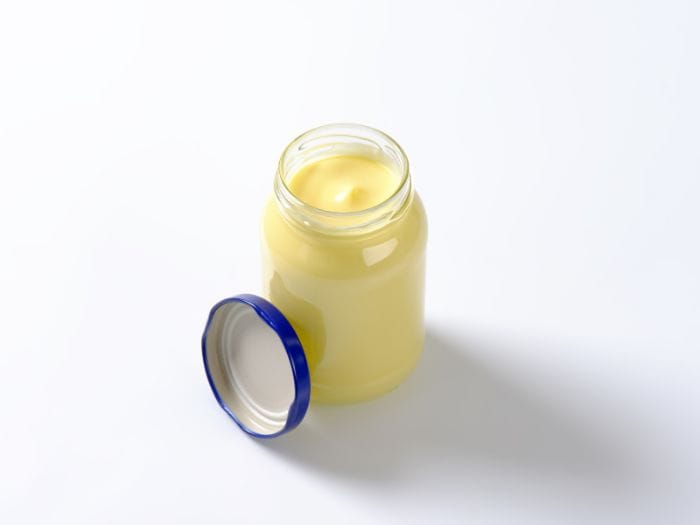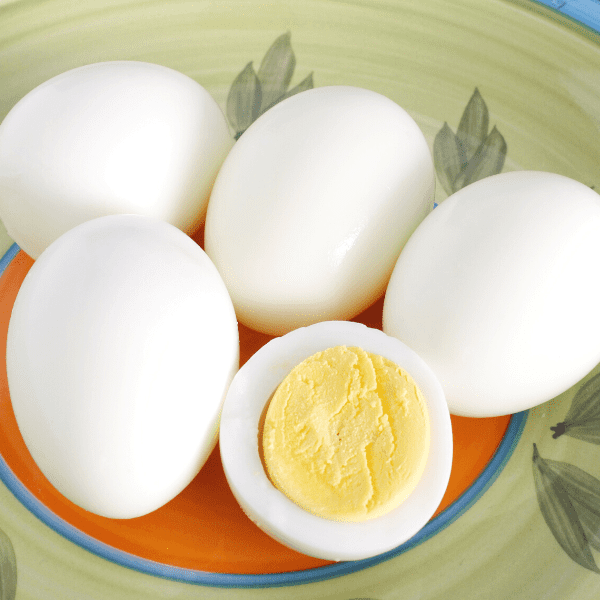Ever found a forgotten container of seafood salad in the back of your fridge and wondered if it’s still good to eat? Understanding the shelf life of seafood salad is essential not only for maintaining the taste and quality of your dish but also for ensuring food safety.
Let’s explore how long you can safely keep seafood salad in the refrigerator, the signs of spoilage to look out for, and some practical tips to extend its freshness. Perfect for those who are new to dealing with seafood salad or anyone who wants to avoid the unpleasant experience of food going bad.
Overview of Seafood salad shelf life
Seafood salad is a delicious and versatile dish that combines various types of cooked seafood, such as shrimp, crab, or fish, with ingredients like mayonnaise, celery, and spices. Due to its high protein content and low acidity levels, seafood salad is prone to bacteria growth if not stored properly. This can lead to food poisoning and other health risks.
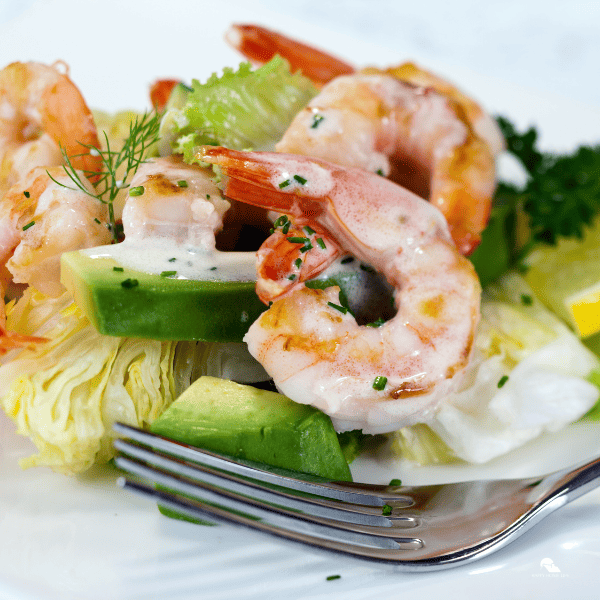
How long is seafood salad good in the fridge?
Seafood salad, when properly stored in an airtight container in the refrigerator, generally remains safe to eat for up to 3 to 4 days. However, this timeframe can vary depending on the freshness of the seafood and other ingredients used. It’s crucial to remember that seafood salad should be refrigerated within two hours of being prepared or purchased to maintain its freshness and prevent the growth of harmful bacteria. Always ensure to check the salad for any signs of spoilage, such as an off smell, color change, or slimy texture, before consuming.
Below is a table showing the shelf life of various seafood salads in the refrigerator:
| Seafood Salad | Refrigerator Shelf Life |
|---|---|
| Imitation Crab Salad | 2-3 days |
| Shrimp Salad | 1-2 days |
| Tuna Salad | 3-5 days |
| Lobster Salad | 1-2 days |
| Salmon Salad | 1-2 days |
| Seafood Pasta Salad (mixed seafood) | 3-4 days |
These are general guidelines and can vary depending on the freshness of the ingredients and other factors. Always remember to properly store the salads in an airtight container in the fridge. If the salad smells off or you’re unsure, it’s best to err on the side of caution and dispose of it.
Storage Guidelines
When storing seafood salad in the fridge, it’s important to follow a few key steps to ensure its freshness and safety.
- First, the salad should be placed in a clean, air-tight container. It’s best to use a container just large enough to hold the salad, as excess air can lead to faster spoilage.
- Second, refrigerate the salad immediately after preparation or serving. The ideal temperature for safe refrigeration is below 40°F (4°C).
- Lastly, it’s worth noting that seafood salad, when properly stored, can last up to three days in the fridge.
Always give it a smell check before consuming — if the salad has a strong, foul odor, it’s likely spoiled and should not be eaten.
But how long can seafood salad last in the fridge?
As with any type of food, it is important to properly store and handle seafood salad to ensure its quality and safety.
Here are some guidelines on how long seafood salad can last in the fridge:
- Freshly made seafood salad should be consumed within 2-3 days. This is because seafood tends to spoil quickly, especially when mixed with other ingredients.
- If the seafood salad has been stored in an airtight container, it can last up to 5 days in the fridge. However, it is best to consume it within 3-4 days for optimal taste and freshness.
- If you have leftover seafood salad from a restaurant or store-bought pack, check the expiry date before consuming. The salad should be eaten before the expiration date for safety reasons.
- Freezing seafood salad is not recommended as it can affect its texture and taste. It is best to consume it fresh or within a few days of making it.
- If you are unsure about the quality or safety of the seafood salad, trust your instincts and discard it. It is better to be safe than sorry when it comes to food consumption.
In addition, here are some tips on how to properly store seafood salad in the fridge:
- Store seafood salad in an airtight container or cover it tightly with plastic wrap. This will help prevent bacteria and odors from contaminating the dish.
- Keep the seafood salad on the bottom shelf of the fridge, where it is colder and less likely to come into contact with other foods.
- Make sure to keep the fridge temperature at or below 40°F (4°C) to slow down bacterial growth and preserve the freshness of the seafood salad.
- If you are bringing seafood salad to a picnic or outdoor event, make sure to pack it in a cooler with ice packs to keep it chilled and safe to eat.
By following these guidelines, you can enjoy delicious seafood salad while also ensuring its safety and freshness.
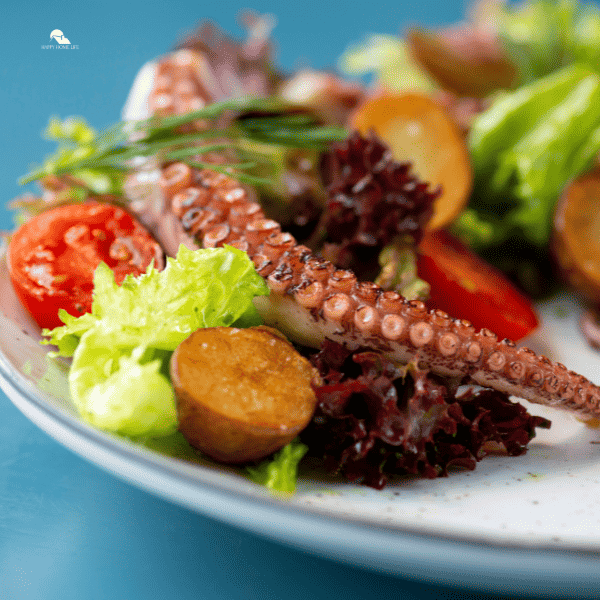
How long can you keep crab salad in the fridge?
Crab salad, similar to other seafood salads, requires special considerations when it comes to storage to ensure its safety and freshness. Generally, crab salad kept in the refrigerator remains good for consumption for about 3 to 5 days.
This relatively short timeframe is due to the quick spoilage rate of seafood. It’s important to store the crab salad in an airtight container on the cooler, lower shelves of the fridge, ensuring the temperature is consistently at or below 40°F (4°C).
However, for the best flavor and freshness, it is recommended to consume crab salad within the first 2 to 3 days. Always remember, if the crab salad develops an off smell, changes color, or you’re in doubt, it’s safer to discard it than risk foodborne illnesses.
How long can seafood stay in the fridge?
When storing seafood in the fridge, it’s important to note that different types have different storage lifetimes. Fresh fish, shellfish, and other seafood can usually be stored in the refrigerator for up to two days before it should be cooked or discarded. Smoked fish can last up to a week, while canned or sealed pouch seafood can last in the fridge for up to a year after purchase.
When storing, it’s crucial to keep the temperature at or below 40°F (4°C) to slow bacterial growth. Always remember, it’s safer to eat the seafood within these timeframes or throw it away if you’re unsure about its freshness. As the old saying goes: when in doubt, throw it out.
How long is imitation crab salad good for?
Imitation crab salad is a popular alternative for those who cannot consume real seafood due to dietary restrictions or allergies. This type of seafood salad usually has a longer shelf life compared to traditional seafood salads because it’s made with imitation crab meat, which contains preservatives.
When stored in an airtight container and kept at the recommended temperature of 40°F (4°C) or below, imitation crab salad can last in the fridge for up to 5 days after preparation. However, it’s still best to consume it within 3-4 days for optimal taste and quality. As always, use your judgment and discard any leftovers that seem off or have a strange smell.
How can you tell if imitation crab has gone bad?
Like with any other food, imitation crab can go bad if not properly stored or handled. Signs of spoilage in imitation crab may include a sour or fishy odor, slimy texture, or discoloration. It’s essential to check the expiration date on the packaging before consuming and to always trust your instincts when it comes to questionable seafood salad. When in doubt, it’s best to throw it out.
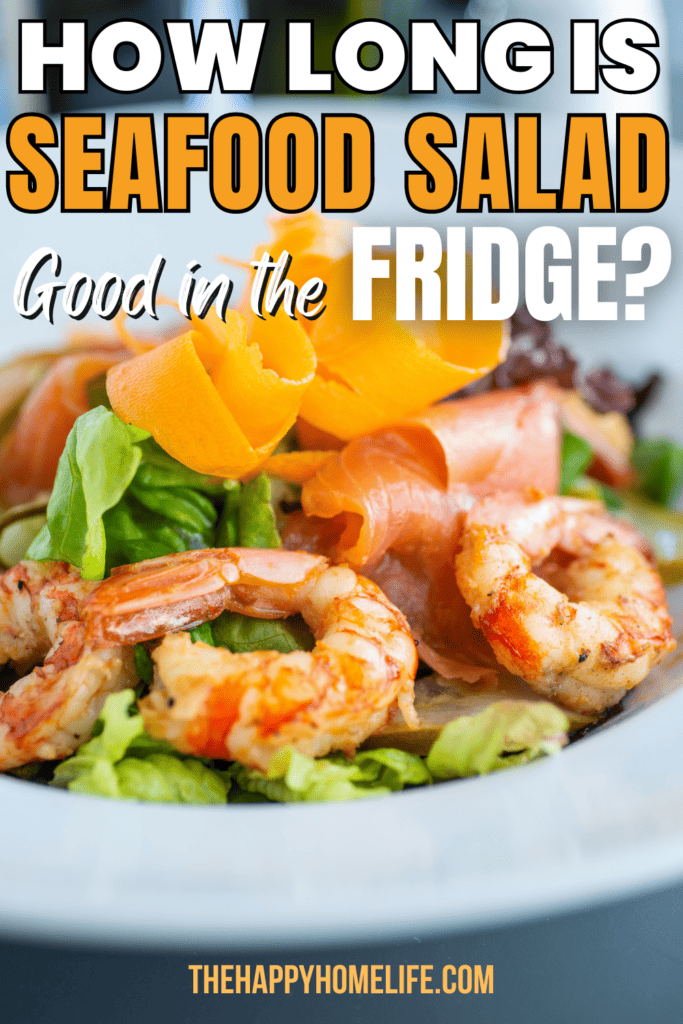
How long can seafood salad stay out of the fridge?
Seafood salad is best kept refrigerated at all times, especially if it contains any type of seafood. Leaving seafood salad out of the fridge for an extended period can lead to bacterial growth and potential foodborne illnesses. The recommended maximum time for leaving perishable food items out on the counter is two hours, so it’s important to consume seafood salad within that timeframe or keep it chilled with ice packs.
If you’re unsure about the length of time the salad has been out, it’s always safer to discard it. Paying attention to proper storage and handling guidelines is crucial in ensuring food safety when consuming seafood salads or any other type of food.



